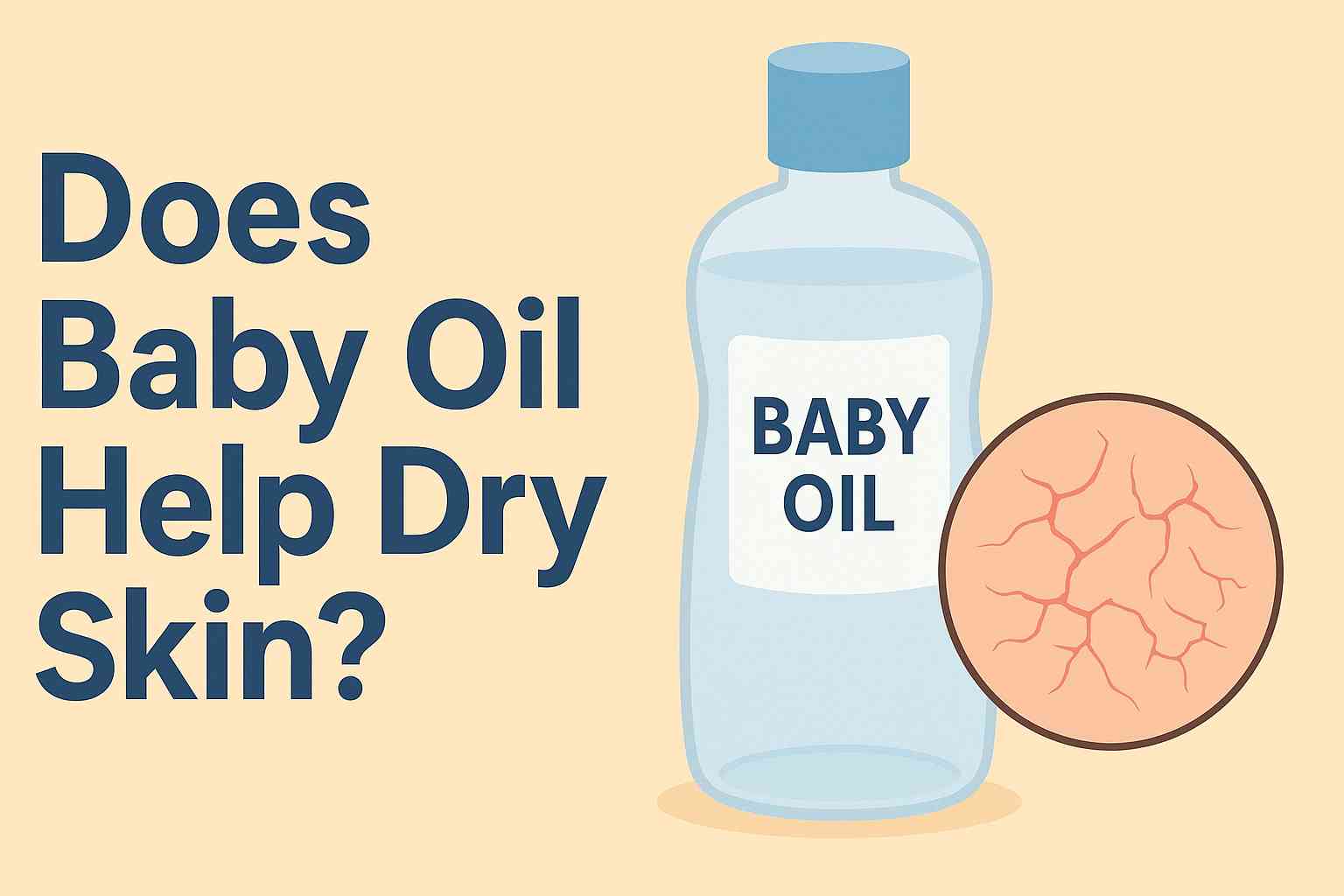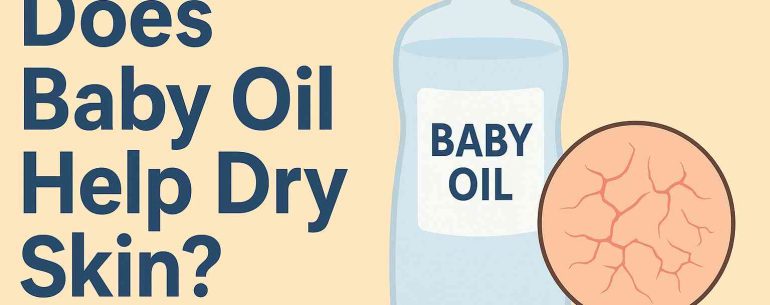Does Baby Oil Help Dry Skin?
Dry skin is one of the most common issues faced by both adults and babies. Whether caused by cold weather, harsh soaps, or naturally sensitive skin, dryness can lead to discomfort, flakiness, and even irritation. Many parents and skincare enthusiasts turn to baby oil as a remedy, but the question remains does baby oil actually help dry skin? In this article, we’ll explore how baby oil works, its benefits, possible drawbacks, and expert recommendations. If you’re a parent, caregiver, or simply someone interested in gentle skincare solutions, this guide brought to you by our trusted baby blog will help you understand everything you need to know.
Understanding Baby Oil: What Is It?
Baby oil is a light, mineral-based oil that is often enriched with fragrance and sometimes with additional moisturizing ingredients like aloe vera or vitamin E. It’s specifically designed for delicate skin, such as that of newborns and infants.
The primary ingredient in most baby oils is mineral oil, a by-product of refining petroleum. While that might sound harsh, cosmetic-grade mineral oil is actually highly purified, hypoallergenic, and non-comedogenic meaning it won’t clog pores.
Because of its mild nature, baby oil is a popular choice not only for babies but also for adults with sensitive or dry skin.
How Baby Oil Works on Dry Skin
Unlike traditional moisturizers that add water to the skin, baby oil works by locking in moisture. It forms a thin, protective barrier on the surface of the skin, preventing water loss and keeping the skin hydrated longer.
Here’s how it works step by step:
- Moisture Retention When applied to damp skin, baby oil traps existing moisture beneath the skin’s surface.
- Barrier Protection It forms a smooth coating that shields the skin from external irritants and harsh environmental factors.
- Softening Effect Over time, it softens rough or scaly skin, leaving it feeling silky and smooth.
This mechanism is what makes baby oil so effective for dry skin especially when used immediately after bathing.
Benefits of Baby Oil for Dry Skin
1. Deep Moisture Lock-In
Baby oil doesn’t penetrate deeply into the skin, but its sealing effect helps retain the water already present. This is especially useful after a shower when your skin is damp and more receptive to moisture.
2. Gentle on Sensitive Skin
Because baby oil is formulated for infants, it’s free from most harsh chemicals and artificial additives found in regular lotions. It’s hypoallergenic and suitable for even the most delicate skin types.
3. Soothes Irritation
Dryness often leads to redness, flaking, and itching. Baby oil helps calm these symptoms by softening the outer layer of the skin and reducing friction.
4. Improves Skin Texture
Regular use of baby oil can lead to smoother, softer skin. It’s also great for restoring the natural glow that dryness often diminishes.
5. Affordable and Easily Available
Compared to specialized moisturizers, baby oil is budget-friendly and available in nearly every pharmacy or supermarket.
The Best Way to Use Baby Oil for Dry Skin
To maximize the benefits, it’s important to apply baby oil correctly. Here’s a simple step-by-step method recommended by skincare experts and our baby blog:
- Start with Damp Skin Apply baby oil immediately after a bath or shower when the skin is still slightly wet. This helps trap the moisture.
- Use a Small Amount A few drops go a long way. Rub it between your palms and gently massage it into your skin using circular motions.
- Avoid Overuse Using too much oil can make the skin greasy and attract dirt.
- Focus on Dry Areas Pay extra attention to elbows, knees, heels, and other rough patches.
- Let It Absorb Wait a few minutes before putting on clothes to avoid staining fabrics.

Baby Oil for Different Skin Types
For Babies:
Baby oil is particularly effective for babies who have mildly dry or flaky skin. However, it’s not recommended for use on broken or irritated skin. Always perform a patch test before applying it all over your baby’s body.
For Adults:
Adults with normal to dry skin can benefit from baby oil as part of their daily skincare routine. It can also be used as a post-shave moisturizer, makeup remover, or even for soothing cracked heels.
For Oily or Acne-Prone Skin:
If your skin tends to produce excess oil, you should use baby oil sparingly. While mineral oil itself is non-comedogenic, applying too much can make the skin feel greasy and may trap sweat or bacteria.
Possible Drawbacks of Baby Oil
Although baby oil has many advantages, it may not be suitable for everyone. Some potential downsides include:
- Greasy Residue: Baby oil doesn’t absorb as quickly as lotions or creams, which can leave the skin feeling oily.
- Fragrance Sensitivity: Some brands include synthetic fragrances that may irritate sensitive skin.
- Not a True Moisturizer: Since baby oil doesn’t add moisture but only seals it in, it won’t be effective if your skin is already dehydrated.
To avoid these issues, choose a fragrance-free or hypoallergenic baby oil and use it only after bathing.
Natural Alternatives to Baby Oil
If you prefer plant-based or organic options, several natural oils work similarly to baby oil in treating dry skin:
- Coconut Oil: Rich in fatty acids, it deeply nourishes and hydrates.
- Jojoba Oil: Mimics the skin’s natural sebum, making it excellent for balancing moisture.
- Almond Oil: Packed with vitamins A and E, it promotes soft and supple skin.
- Olive Oil: A kitchen staple that doubles as a powerful moisturizer for dry or rough patches.
Each of these natural oils can be used alone or in combination with baby oil for added benefits.
Dermatologist Insights
Most dermatologists agree that baby oil is safe and beneficial for dry skin when used appropriately. According to skincare professionals, the key is to apply it at the right time and in moderation.
Dr. Helen Matthews, a London-based dermatologist, explains:
“Baby oil works well as an occlusive barrier, but it shouldn’t replace your regular moisturizer. Use it to lock in hydration rather than as the main source of moisture.”
This aligns with recommendations found across trusted parenting and baby blog platforms, which emphasize layering baby oil over a hydrating lotion or serum for the best results.
Tips for Maximizing Results
To get the most from baby oil, try these practical tips:
- Mix with Lotion: Blend a few drops of baby oil with your regular body lotion for a smoother texture and added hydration.
- Use as a Massage Oil: The silky texture makes it perfect for relaxing massages that also nourish your skin.
- Add a Few Drops to Bath Water: This can help moisturize your skin while you soak.
- Keep It in Your Routine: Consistency is key. Regular use will lead to noticeable improvement in skin softness and tone.
The Final Verdict: Does Baby Oil Help Dry Skin?
Yes baby oil does help dry skin, especially when used on damp skin to lock in existing moisture. It’s gentle, affordable, and widely accessible, making it an excellent option for everyday skincare.
However, it’s not a miracle cure. For severely dry or cracked skin, pairing baby oil with a rich moisturizer or cream is more effective. And for individuals with oily or acne-prone skin, use should be limited to avoid excessive greasiness.
Ultimately, baby oil is a timeless product that remains a staple in skincare routines around the world. Whether you’re caring for your baby’s delicate skin or simply want to achieve a healthy, hydrated glow, this simple product can make a significant difference—just as many parents and readers of our baby blog have discovered.
In summary:
- Baby oil helps retain moisture, not create it.
- Best applied on damp skin.
- Ideal for dry and sensitive skin types.
- Avoid overuse or application on broken skin.
With the right technique, baby oil can turn dry, dull skin into soft, radiant, and healthy-looking skin one drop at a time.









Leave a Reply
You must be logged in to post a comment.